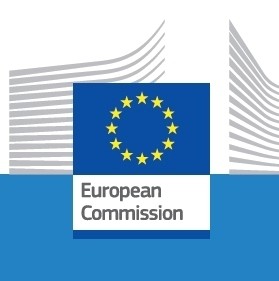
(www.MaritimeCyprus.com) The sixth edition of the EU Blue Economy Report continues to analyse the scope and size of the Blue Economy in the European Union. Its main objective remains to provide support to policymakers and stakeholders in the quest for a sustainable development of oceans, coastal resources and, most notably, to the development and implementation of polices and initiatives under the European Green Deal in line with the new approach for a sustainable Blue Economy. Through its economic evidence, the Report also seeks to serve as a source of inspiration to investors.
The sixth edition of the Report focuses on a summarised data analysis, trends and drivers of the Blue Economy established sectors (i.e., those that traditionally contribute to the Blue
Economy), as well as of Blue Biotechnology and Ocean Energy. This edition includes as well a brief analysis on the impacts of Russia’s invasion of Ukraine on some of the Blue Economy sectors.
The report also contains a section following the Energy transition communication, which comprises an analysis of the energy transition in the Blue Economy. It assesses GHG emissions taking into consideration different species, fishing techniques and their production phases. The report ends with a section analysing climate change and coastal impacts. This section summarises findings related to the future dynamics of coastal flood impacts, adaptation and ecosystem services, along the EU-27 coastline.
This edition also takes advantage of the Blue Economy Observatory platform, which provides more timely and regular updates of the Blue Economy data. Further analysis will be published throughout the year, as the most recent data become available, and sectors or topics are highlighted.
The Blue Economy established sectors include Marine living resources, Marine non-living resources, Marine Renewable energy, Port activities, Shipbuilding and repair, Maritime transport and Coastal tourism.
The analysis of these sectors is based on data collected by the European Commission from EU Member States and the European Statistical System. Fisheries and aquaculture data were collected under the EU Data Collection Framework (DCF). Analyses for all other established sectors are based on Eurostat data from Structural Business Statistics (SBS), PRODCOM, National Accounts and tourism statistics.
The Blue Economy’s emerging and innovative sectors include Marine renewable energy (i.e., ocean energy, floating solar energy and offshore hydrogen generation), Blue biotechnology, Desalination, Maritime defence, security and surveillance, Research and Infrastructure (submarine cables, robotics). However, in this edition of the Blue Economy report we are only providing an assessment of the Blue biotechnology and Ocean energy sectors. These sectors offer significant potential for economic growth, sustainability transition, as well as employment creation. For the emerging sectors data are not fully available in the public domain. Analyses are provided for the EU-27 as a whole and by sector and industry for each Member State (MS). The methodology followed in this report is detailed in the EU Blue Economy Observatory.
Established sectors of the EU Blue Economy generated a gross value added (GVA) of €129 billion in 2020, that is, a 30% decrease compared to 2019, due to COVID-19 impacts. Gross operating surplus (profit) at €43.6 billion was 40% lower and total turnover at €523 billion decreased by 22% compared to 2019. COVID-19 measures such as stringent public health measures and imposed lockdowns, travel restrictions, event cancellations and closure of food services and hotel industries affected the different Blue Economy sectors, with some such as Coastal tourism among the most impacted. These established sectors directly employed almost 3.34 million people in 2020, a 26% decrease compared to 2019.
The full report can be downloaded below:
Source: European Commission














